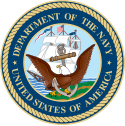Dorothy Stratton
 | |
| Data i miejsce urodzenia | |
|---|---|
| Data i miejsce śmierci | |
| Przebieg służby | |
| Lata służby | 1942–1946 |
| Siły zbrojne | |
| Jednostki | WAVES, SPARS (US Coast Guard Women’s Reserve) |
| Główne wojny i bitwy | |
| Późniejsza praca | dyrektor ds. personalnych Międzynarodowego Funduszu Walutowego, |
| Odznaczenia | |
Dorothy Constance Stratton (ur. 24 marca 1899 w Brookfield, zm. 17 września 2006 w West Lafayette)[1] – komandor (ang. Captain) amerykańskiej Straży Wybrzeża, pierwsza kobieta przyjęta do służby w Women’s Reserve of the Coast Guard, psycholog, nauczycielka akademicka i działaczka amerykańskiej organizacji skautowej dla dziewcząt.
Życiorys
W 1920 uzyskała bakalaureat na Ottawa University w stanie Kansas. Następnie studiowała na Uniwersytecie Chicagowskim, gdzie w 1924 uzyskała stopień magistra (MA) w dziedzinie psychologii. Doktorat (PhD) obroniła na Columbia University w 1932. Jednocześnie pracowała jako nauczycielka w szkołach średnich – w rodzinnym Brookfield, Renton i San Bernardino. W 1933 została wykładowcą psychologii na Purdue University w West Lafayette oraz dziekanem ds. studentek. W 1940 otrzymała nominację profesorską.
W 1942 zawiesiła pracę na uczelni i wstąpiła do pomocniczych oddziałów kobiecych US Navy, WAVES (Women Accepted for Volunteer Emergency Service), otrzymując stopień kapitana marynarki (ang. Lieutenant). Następnie odbyła szkolenie w US Naval Training Station w Smith College w Northampton. Po jego zakończeniu została zastępcą komendanta szkoły dla radiooperatorek WAVES. W listopadzie 1942 została awansowana do rangi komandora podporucznika (ang. Lieutenant Commander) i odkomenderowana (z przeniesieniem z US Navy) do sztabu komendanta Straży Wybrzeża w Waszyngtonie, otrzymując zadanie organizacji kobiecych oddziałów rezerwowych Straży Wybrzeża (United States Coast Guard Women’s Reserve). Stało się to tuż po powołaniu nowej formacji przez prezydenta Roosevelta. Jako organizatorka i pierwszy dyrektor USCGWR była jednocześnie pierwszą kobietą przyjętą do służby w tej formacji. Dla kobiecych oddziałów rezerwowych wymyśliła także – na wzór WAVES – skrótową nazwę: SPARS, inspirowaną łacińskim mottem Straży Wybrzeża: „Semper PARatus” (pol. „zawsze gotowy”).
W okresie II wojny światowej pod dowództwem Stratton pozostawało 10 tysięcy kobiet, w tym ok. tysiąca kobiet-oficerów. W grudniu 1943 otrzymała awans na stopień komandora porucznika (ang. Commander), a w styczniu 1944 – komandora. Funkcję szefowej SPARS sprawowała do demobilizacji formacji w 1946. Za swoje dokonania została odznaczona Legią Zasługi.
W 1947 została pierwszym dyrektorem ds. personalnych Międzynarodowego Funduszu Walutowego. Pozostawała na tym stanowisku do 1950, kiedy objęła funkcję krajowej naczelniczki Girl Scouts of the USA. Piastowała ją do 1960.
W 2005 – w wieku 106 lat – została laureatką nagrody Stowarzyszenia Absolwentów Ottawa University jako wybitna liderka kobieca. Sama zaś była patronką utworzonej w 2001 nagrody Towarzystwa Kobiet Oficerów Zawodowych dla wyróżniających się w służbie kobiet-oficerów Straży Wybrzeża.
Pamięć
W 2006 jej imię otrzymał kuter Straży Wybrzeża, klasy Legend – USCGC „Stratton” (WMSL-752).
Przypisy
- ↑ United States Navy League – Dorothy C. Stratton (ang.) [dostęp 2011-09-26]
Bibliografia
- United States Navy League – Commissioning of the Stratton. uscgcstrattoncommissioning.com. [zarchiwizowane z tego adresu (2012-03-27)].
Linki zewnętrzne
- Purdue University Obituary. news.uns.purdue.edu. [zarchiwizowane z tego adresu (2007-08-07)].
Media użyte na tej stronie
United States Coast Guard Seal, in correct PMS colors. This emblem shall only be used in accordance with the Coast Guard Heraldry Manual, and is not to be reproduced commercially without prior approval of the U.S. Coast Guard.
*Description: On a circular background of fair sky and moderate sea with land in sinister base, a tri-mast square rigged ship under way before a fair breeze with after top-sail furled, commission pennant atop the foremast, National Ensign atop the main, and the commodore's flag atop the mizzen. In front of the ship a luce-type anchor inclined slightly bendwise with the crown resting on the land and, in front of the shank and in back of the dexter fluke, an American bald eagle rising to sinister regarding to dexter, one foot on the ground, the other resting on the anchor near the shank; all in proper colors. The whole within a blue annulet bearing the inscription "Department of the Navy" at the top and "United States of America" at the bottom, separated on each side by a mullet and within a rim in the form of a rope; inscription, rope, mullet, and edges of annulet all gold. *Background: The policy for use of the Navy seal and emblem is contained in SECNAV Instr 5030.4 and SECNAV Instr 5030.6. The seal design was approved by the President of the United States by Executive Order 10736 dated October 23, 1957. Request for use of the Navy emblem should be submitted in writing to Defense Printing Service, ATTN: DPSMO, 8725 John Kingman Rd Suite 3239, Fort Belvoir, VA 22060-6220. The telephone number is (703) 767-4218. 1879 version here: http://etc.usf.edu/clipart/54900/54985/54985_seal_navy.htm
Ribbon for the American Campaign Medal awarded by the United States Department of Defense.
Ribbon from the Legion of Merit awarded by the United States Department of Defense.
Ribbon for the World War II Victory Medal awarded by the United States Department of Defense.






